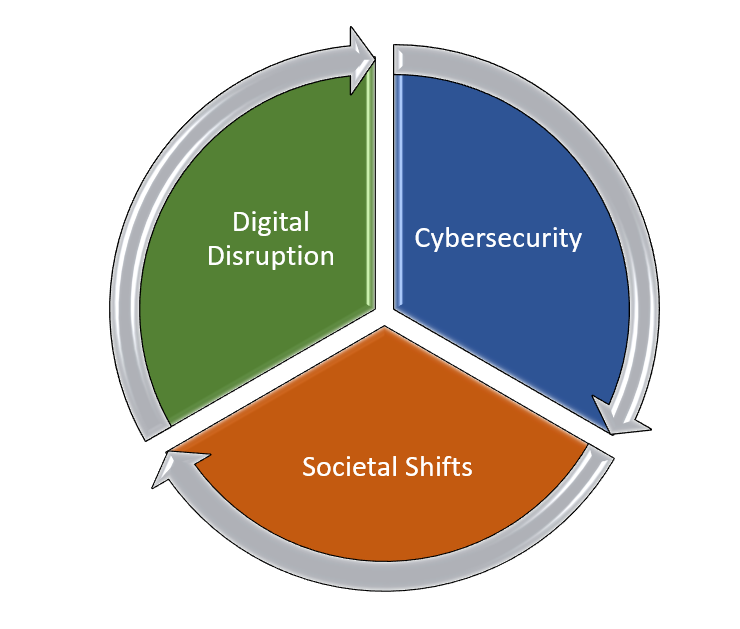Patent Trolls Emerged Because of Market Opportunity rather than Market Demand
How to Harness Digital Assets for the Future
Today, many U.S. businesses are in crisis to respond to an emerging threat: Non Practicing Entities. While innovation stalwarts like IBM, Microsoft, Google and Apple remain ahead of the innovation curve, far too many other companies have become short sighted in their ability to identify, value and protect their own innovations. How do we know? A new industry emerged in response to a market opportunity – affectionately referred to as Patent Trolls. Companies like Acacia, Intellectual Ventures, RPX, and even Universities have not only emerged in response to a market opportunity, but they are thriving on buying up patents, innovating and patenting and all for one reason: to extract a license fee from businesses large and small. Most were formed by the existing digital leaders only to find these innovation hubs turned into a real threat to their customers. This new market represented $29 billion in license and settlement fees paid in 2011 by US Companies. Troll related activity in high technology represents 75% of all IP litigation. And, why are so many companies falling prey to these “trolls”? The number one answer is because they don’t have the right bargaining chips. The big digital players settle, swap or ward off the trolls with their portfolio, while the rest of American companies are left with no bargaining chips. If companies are or could be infringing on patents owned by a troll and they don’t have any of their own patents to back up their position, then they are forced into an exorbitantly expensive patent law suit or to settle behind closed doors. The patent trolls know which companies are weak and exposed. They know which companies are, unbeknownst to them, using digital technologies or assets or devices through a vendor or directly that infringes on one of their patents. Trolls know that most companies are moving too fast to consider patenting their digital activity and thus an easy target. Trolls know that innovation and patents pay off in high profit margins. Armed with data, they know exactly the right price point to extract a license fee from a company.
In the current Digital Age, organizations must step up and take a proactive stance in developing and protecting intellectual property or risk global marketplace competitors stealing and protecting them under their names, or worse, licensing to a troll (also known in this context as privateers). This also means taking measures to drive more innovation like revolutionizing digital content to drive brick-and-mortar traffic, fostering internal collaboration through platforms and processes no matter the geographic location, and utilizing alternate methods of driving content to target audiences.
While IP lawsuits over technology are prevalent among Apple, Samsung, HTC, Google, Microsoft, Orcale, RIM, LG, Nokia, Cisco and other digital and technology leaders (also the largest patent filers), other industries have been left largely without a digital or technology patent portfolio to protect themselves when attacked by a troll. From consumer products to retail and even entertainment industries, they consider themselves “not an IP company” and so they don’t invest in protecting their digital innovations. Consumer products companies focus on packaging, diapers, toothpaste compounds and other patents, but not in digital. All the while, their marketing is shifting from a traditional media age to a digital age, requiring innovation in new digital arenas. Likewise, retailers might have patented certain configurations, packaging or other inventions, but not its digital technology. Contributing to the problem, they often use outside vendors without ensuring that they are not using patentable technologies in rendering their services and are ultimately sued as an end user (sometimes without sufficient indemnification). Companies are innovating, for sure, that’s how new products and services emerge to meet new market demands. But the trolls have identified a simple market opportunity. Evaluate what companies are doing in a digital age, apply for patents to protect that technology by tracking data of what companies are doing in their digital platforms, and then extract a license fee from them for using that same technology. And, trolls even go a step further, they are investing in real research, development and innovation directly and protect every aspect of it. Unfortunately for consumers, their sole purpose is to extract license fees from companies large and smalls, rather than to innovate and build products and services that help society.
How Did this Happen?
The bottom line is that business and the U.S. economy have become so focused on short-term street value, from which executive bonuses trickle down, that the value of long-term research and development and building intellectual assets on a global level has been diminished. Meanwhile, we have evolved from an industrial age to an information age and are now emerging in a digital age where the rules are changing faster than most companies can keep up. While companies are innovating, many are not taking the next step to protect those innovations as assets. For many of these companies, digital strategy is still emerging and is largely fragmented across the company rather than centralized. So, when the company views itself as “not an IP company” then innovation is occurring, but is not captured and evaluated for protection purposes, rather just rolled out.
Innovation is about investing in new ideas, breaking down silos, allowing employees to take risks with budgets set aside for those risks, tearing apart old assumptions and thinking about the future. And then, it’s about owning those inventions to capture and maintain market dominance. Either you innovate and own it or someone else will. So, how do we know innovation capture is declining and not growing in the U.S.? Today, the metric by which most invention is measured is patents granted. Patents are largely the result of innovation that can be used as an asset for companies in the long term. In 2010, half of all patents issued in the U.S. were awarded to non U.S. companies and nearly 60 percent of the information technology patents originated outside of the U.S.
This failure of many U.S. organizations to protect their innovations has resulted in the explosion of the the patent troll business. Due to the increasing number of easy targets—companies lacking patents to defend themselves—patent trolls have amassed large portfolios of patents to use against them. And many companies have sold off patent portfolios to these NPEs to boost revenue and short term gains.
Kodak, case in point, sold its patent portfolio to many NPEs for hundreds of millions of dollars in a fight to survive. Kodak may not have pursued license fees against you if you used one of their patents on your web site, but the trolls will. Like it or not, patent trolls are simply responding to a market opportunity. So to all those CEOs out who don’t take the necessary steps to protect your innovation pipeline, look out. Trolls are on the rise. The average suit is $1.1 million dollars, often resulting in settlement rather than victory. American companies that are willing to take a proactive stance in protecting their digital innovations have a significant opportunity to end the NPE practice while driving product improvements and strengthening their competitive position.
Making an Innovation Change – It Starts at the Top
Leadership must set the tone. Leadership must understand the value of building an innovation pipeline, capturing those ideas, and then tracking them for protection and use as an intellectual asset. It’s all about data to drive results in a digital age. It must be a strategic short- and long-term investment. It’s important to pay attention to cultural change and provide incentives, both financial and recognition-based, to facilitate a collaborative, knowledge sharing environment that values intellectual assets as the end result.
Process is essential. Human beings are creative and innovative creatures. Establishing a methodology and process that facilitates collaboration and captures ideas into a process that can track it into a valuable asset is essential. Risk taking and failures must not just be allowed, but celebrated and budgeted for, when it comes to innovation.
Technology & Knowledge Sharing. Using the right technology based tools to capture ideas, share data and information across stakeholder groups is essential. All too often within large companies, multiple groups are performing the same tasks, repeating or reworking them using different data sets. These efforts must be centralized and disseminated through a centralized knowledge sharing program that can capture ideas, develop them and ultimately turn them into valuable “innovative” assets.
Companies must do more with less and produce even greater return on investment faster to compete and survive today. But they can’t sacrifice innovation and asset protection as a result. While Wall Street may value day-to-day performance and executives strive for bonuses as a result, the rest of us rely on companies to invest in our future. While Apple, Microsoft and IBM continue to lead in innovation and building new technologies for our future, many others have simply opted out as “not an IP company.” Those companies are the targets of trolls. Savvy companies will invest in innovation pipelines and utilize technology of today for efficiencies to maximize the impact and return on investment of tomorrow.
Note: The above research is based on the research acquired in developing and writing Brand Rewired and Domain Names Rewired, two books authored by Jennifer Wolfe.





















